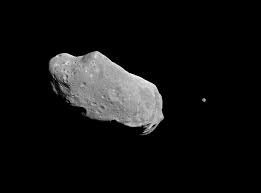
Breaking News
 Netanyahu's New Slant to Lure Trump into War with Iran
Netanyahu's New Slant to Lure Trump into War with Iran
 "This Is The Finale Of The Great Financial Reset"; 'Dr.Gold' Warns They're Gob
"This Is The Finale Of The Great Financial Reset"; 'Dr.Gold' Warns They're Gob
 Ultraprocessed Food Makers Respond To MAHA Amid Record Lobbying Effort
Ultraprocessed Food Makers Respond To MAHA Amid Record Lobbying Effort
Top Tech News
 EngineAI T800: Born to Disrupt! #EngineAI #robotics #newtechnology #newproduct
EngineAI T800: Born to Disrupt! #EngineAI #robotics #newtechnology #newproduct
 This Silicon Anode Breakthrough Could Mark A Turning Point For EV Batteries [Update]
This Silicon Anode Breakthrough Could Mark A Turning Point For EV Batteries [Update]
 Travel gadget promises to dry and iron your clothes – totally hands-free
Travel gadget promises to dry and iron your clothes – totally hands-free
 Perfect Aircrete, Kitchen Ingredients.
Perfect Aircrete, Kitchen Ingredients.
 Futuristic pixel-raising display lets you feel what's onscreen
Futuristic pixel-raising display lets you feel what's onscreen
 Cutting-Edge Facility Generates Pure Water and Hydrogen Fuel from Seawater for Mere Pennies
Cutting-Edge Facility Generates Pure Water and Hydrogen Fuel from Seawater for Mere Pennies
 This tiny dev board is packed with features for ambitious makers
This tiny dev board is packed with features for ambitious makers
 Scientists Discover Gel to Regrow Tooth Enamel
Scientists Discover Gel to Regrow Tooth Enamel
 Vitamin C and Dandelion Root Killing Cancer Cells -- as Former CDC Director Calls for COVID-19...
Vitamin C and Dandelion Root Killing Cancer Cells -- as Former CDC Director Calls for COVID-19...
 Galactic Brain: US firm plans space-based data centers, power grid to challenge China
Galactic Brain: US firm plans space-based data centers, power grid to challenge China
Asteroid sneaks past satellites in one of the closest flybys on record

A previously unseen asteroid the size of a truck flew about 4,350 miles (7,000 kilometers) over the Pacific Ocean on Monday, making it one of the closest passes by our planet on record.
Astronomers had no notice of asteroid 2020 JJ's existence, as it was discovered using the Mt. Lemmon Survey in Arizona right around the time it reached its closest point to us.
NASA keeps an online database of close approaches by asteroids and other "near-Earth objects" going back to 1900, and 2020 JJ comes in as the sixth closest approach ever recorded. It should be noted that the top 10 close approaches have all come since 2004. This isn't because asteroids started attacking us in the 21st century. Rather, it says something about how astronomers and their technology are becoming better at spotting ever-smaller and closer asteroids.

 #602: Priced Out
#602: Priced Out


